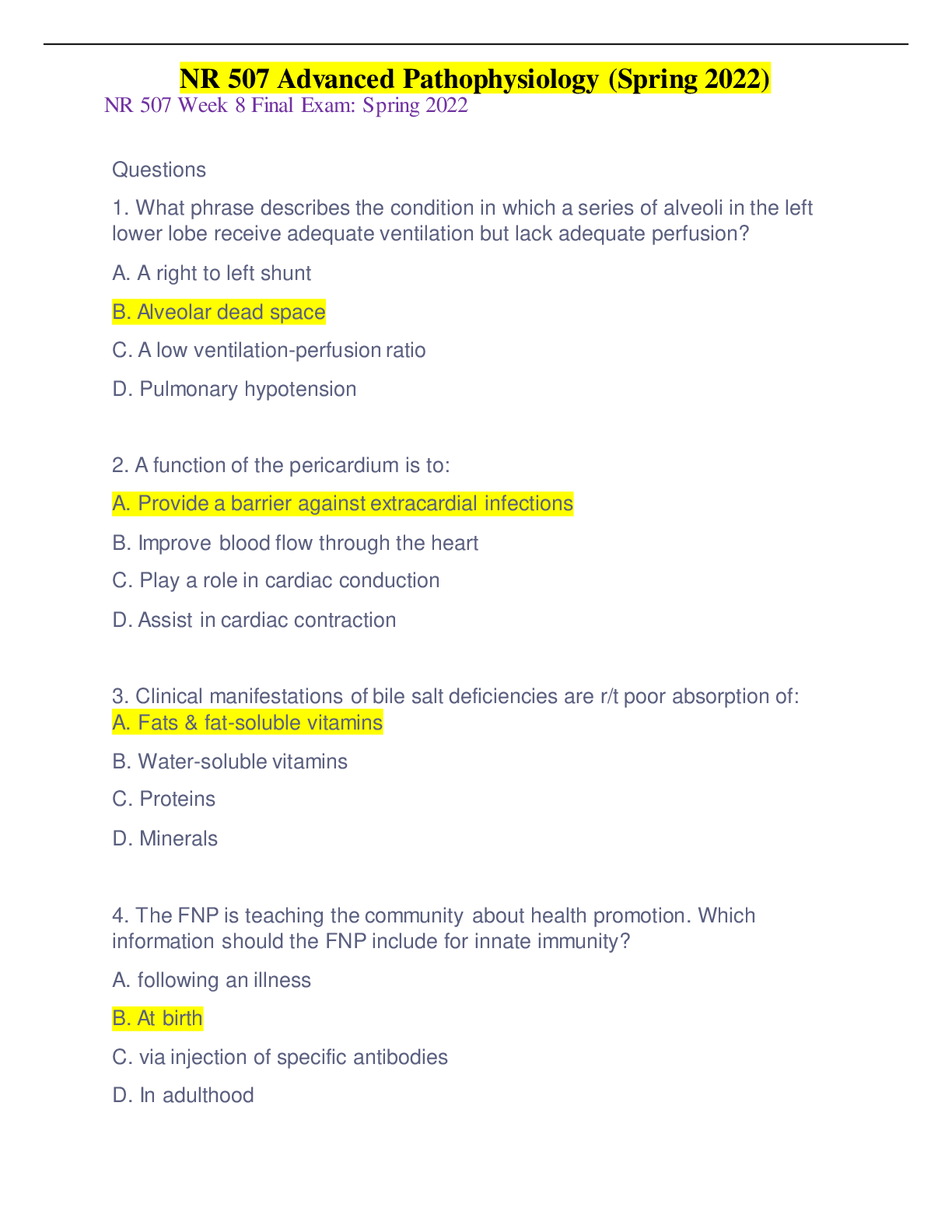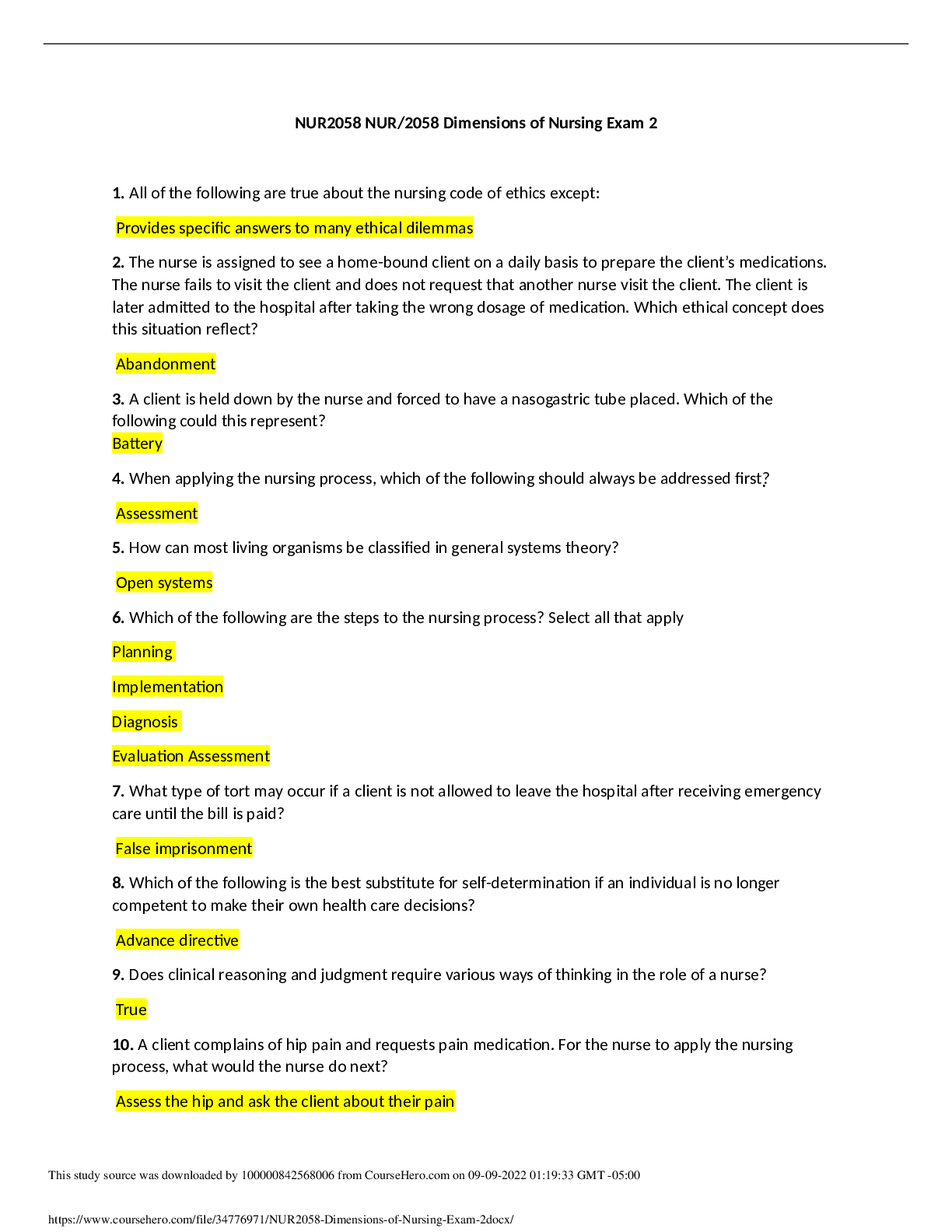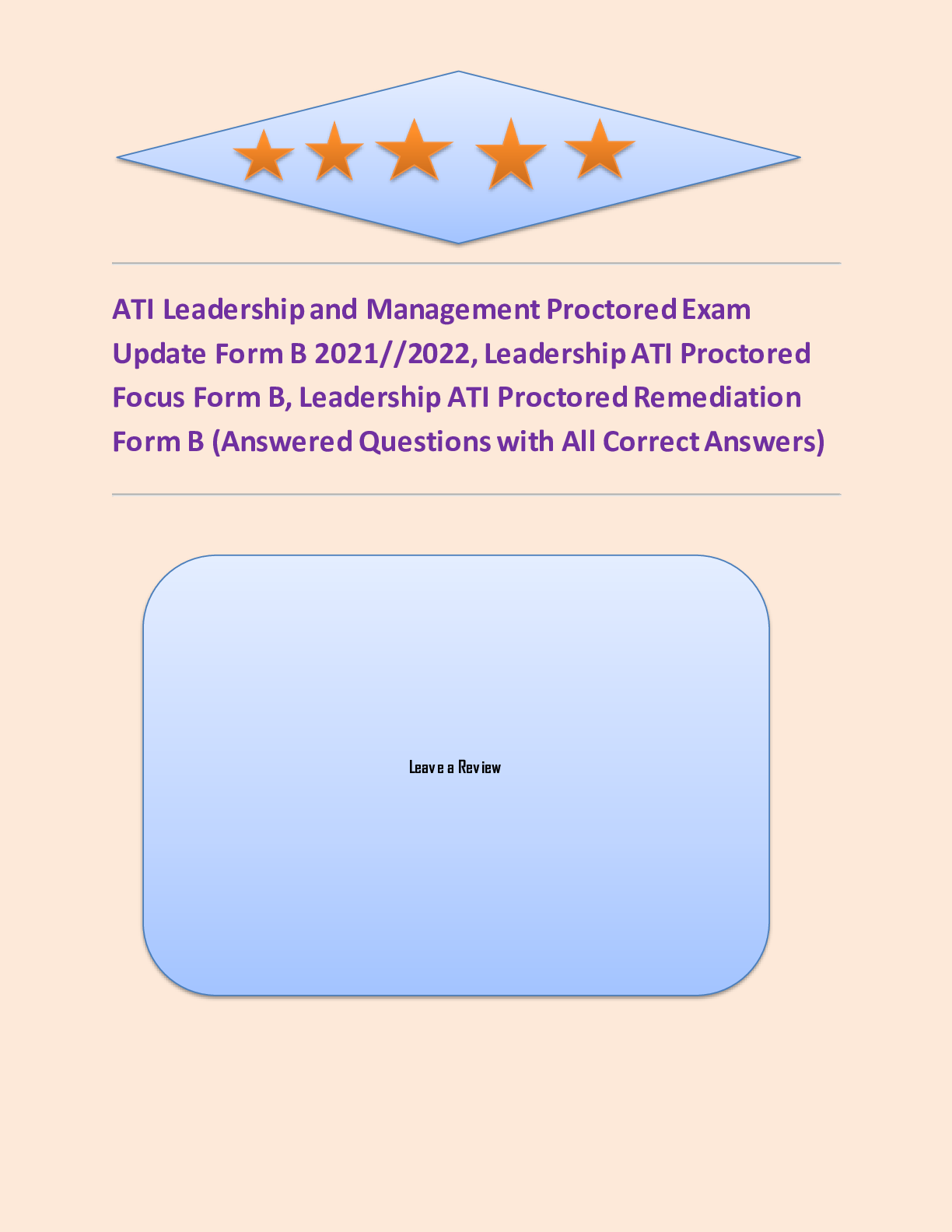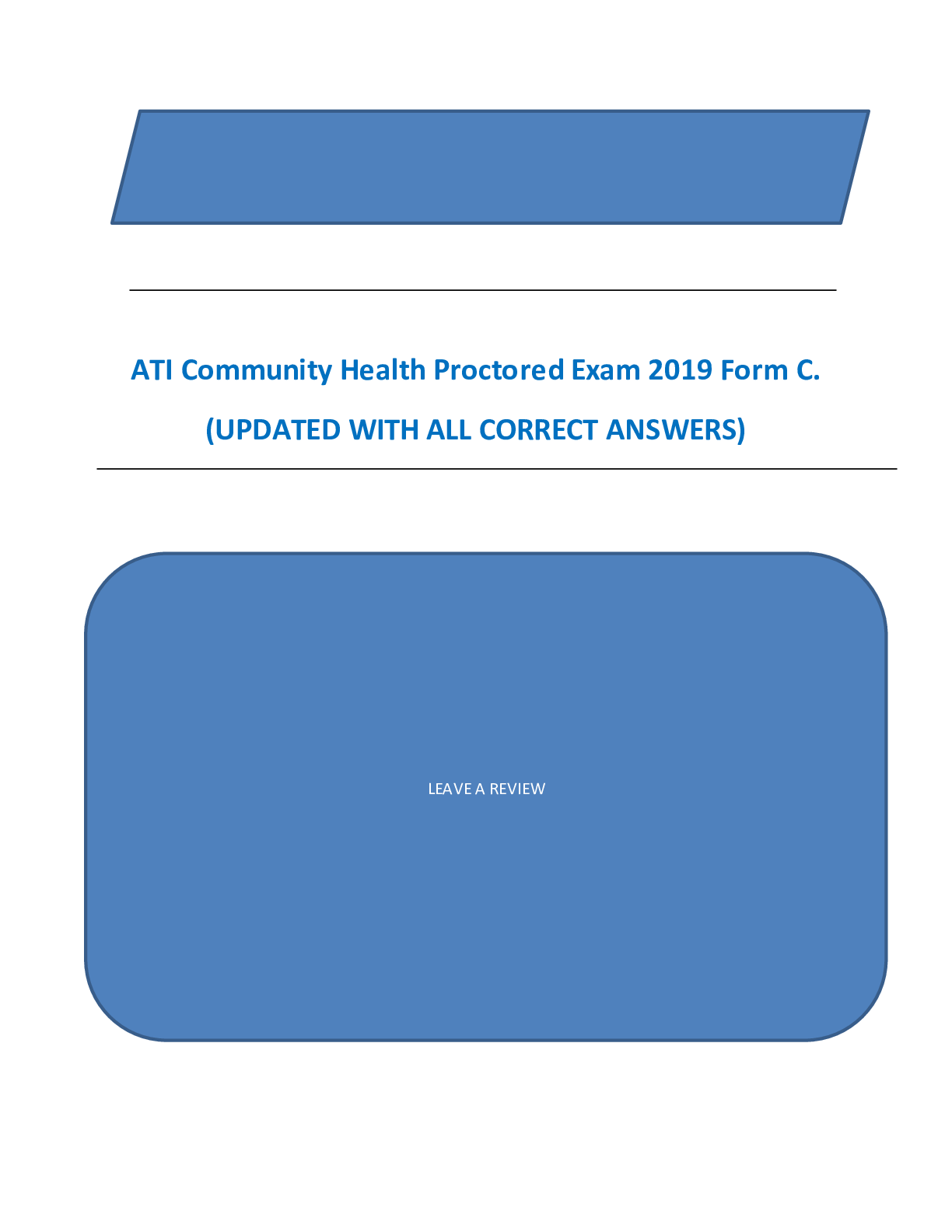OB Maternity HESI > EXAM > OB Maternity HESI Exam Questions with All Correct Answers |Graded A+ Latest (All)
OB Maternity HESI Exam Questions with All Correct Answers |Graded A+ Latest
Document Content and Description Below
OB Maternity HESI Exam Questions with All Correct Answers |Graded A+ Latest Twenty-four hours after admission to the newborn nursery, a full-term male infant develops localized swelling on the rig... ht side of his head. In a newborn, what is the most likely cause of this accumulation of blood between the periosteum and skull that does not cross the suture line? A. Cephalhematoma, which is caused by forceps trauma B. Subarachnoid hematoma, which requires immediate drainage C. Molding, which is caused by pressure during labor D. Subdural hematoma, which can result in lifelong damage In developing a teaching plan for expectant parents, the nurse decides to include information about when the parents can expect the infant's fontanels to close. Which statement is accurate regarding the timing of closure of an infant's fontanels that should be included in this teaching plan? A. The anterior fontanel closes at 2 to 4 months and the posterior fontanel by the end of the first week. B. The anterior fontanel closes at 5 to 7 months and the posterior fontanel by the end of the second week. C. The anterior fontanel closes at 8 to 11 months and the posterior fontanel by the end of the first month. D. The anterior fontanel closes at 12 to 18 months and the posterior fontanel by the end of the second month. Which maternal behavior is the nurse most likely to see when a new mother receives her infant for the first time? A. She eagerly reaches for the infant, undresses the infant, and examines the infant completely. B. Her arms and hands receive the infant and she then traces the infant's profile with her fingertips. C. Her arms and hands receive the infant and she then cuddles the infant to her own body. D. She eagerly reaches for the infant and then holds the infant close to her own body. Which findings are most critical for the nurse to report to the primary health care provider when caring for the client during the last trimester of her pregnancy? (Select all that apply.) A. Increased heartburn that is not relieved with doses of antacids B. Increase of the fetal heart rate from 126 to 156 beats/min from the last visit C. Shoes and rings that are too tight because of peripheral edema in extremities D. Decrease in ability for the client to sleep for more than 2 hours at a time E. Chronic headache that has been lingering for a week behind the client's eyes A client in active labor is becoming increasingly fearful because her contractions are occurring more often than she had expected. Her partner is also becoming anxious. Which of the following should be the focus of the nurse's response? A. Telling the client and her partner that the labor process is often unpredictable B. Informing the client that this means she will give birth sooner than expected C. Asking the client and her partner if they would like the nurse to stay in the room D. Affirming that the fetal heart rate is remaining within normal limits A new mother asks the nurse, "How do I know that my daughter is getting enough breast milk?" Which explanation is appropriate? A. "Weigh the baby daily, and if she is gaining weight, she is getting enough to eat." B. "Your milk is sufficient if the baby is voiding pale, straw-colored urine six to ten times a day." C. "Offer the baby extra bottled milk after her feeding and see if she still seems hungry." D "If you're concerned, you might consider bottle feeding so that you can monitor intake." Twenty minutes after a continuous epidural anaesthetic is administered, a labouring client's blood pressure drops from 120/80 to 90/60 mm Hg. Which action should the nurse take immediately? A. Notify the health care provider or anaesthesiologist. B. Continue to assess the blood pressure every 5 minutes. C. Place the client in a lateral position. D. Turn off the continuous epidural. One hour following a normal vaginal delivery, a newborn infant boy's axillary temperature is 96° F, his lower lip is shaking, and when the nurse assesses for a Moro reflex, the boy's hands shake. Which intervention should the nurse implement first? A. Stimulate the infant to cry. B. Wrap the infant in warm blankets. C. Feed the infant formula. D. Obtain a serum glucose level. Which findings are of most concern to the nurse when caring for a woman in the first trimester of pregnancy? (Select all that apply.) A. Cramping with bright red spotting B. Extreme tenderness of the breast C. Lack of tenderness of the breast D. Increased amounts of discharge E. Increased right-side flank pain [Show More]
Last updated: 11 months ago
Preview 1 out of 13 pages
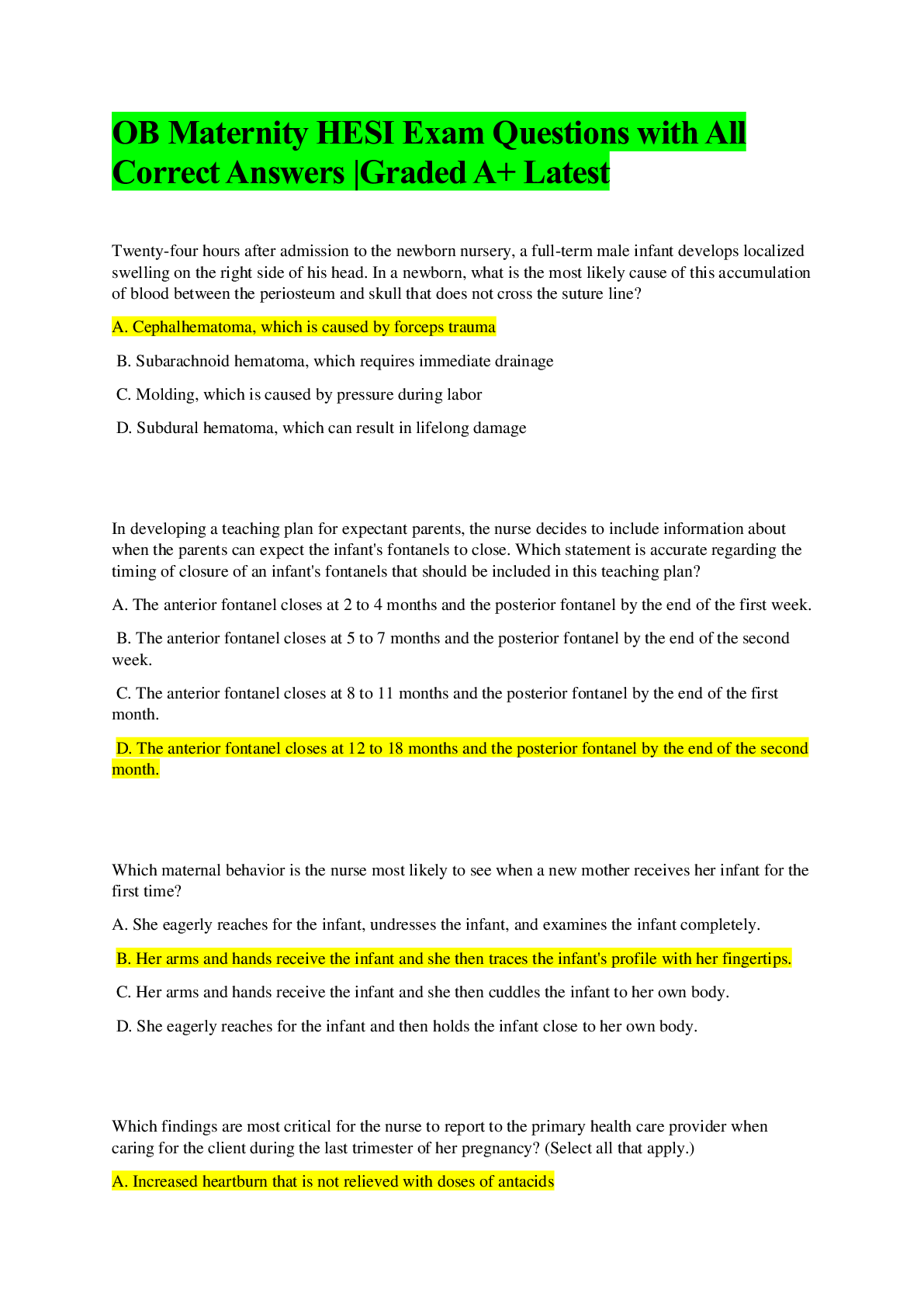
Reviews( 0 )
Document information
Connected school, study & course
About the document
Uploaded On
May 24, 2023
Number of pages
13
Written in
Additional information
This document has been written for:
Uploaded
May 24, 2023
Downloads
0
Views
36

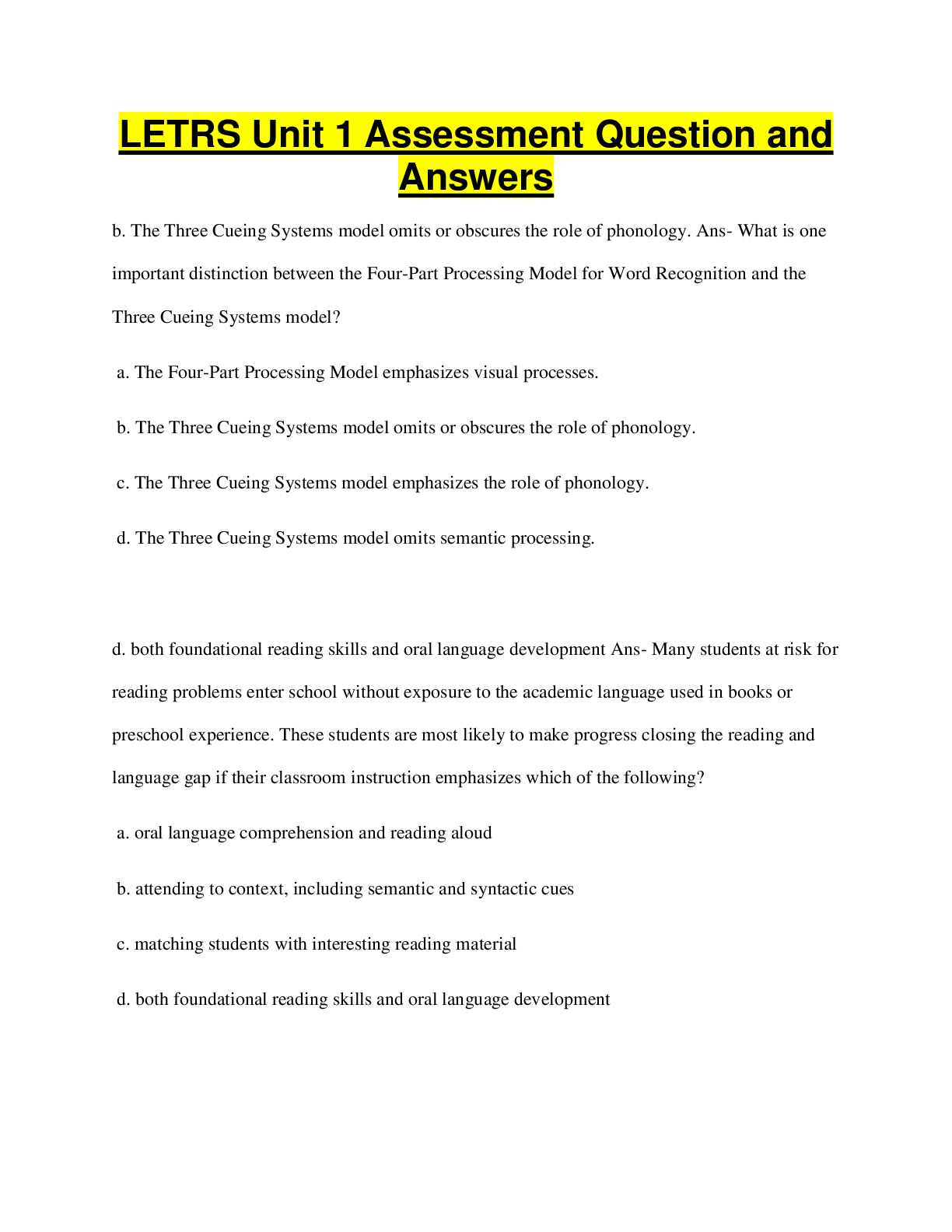
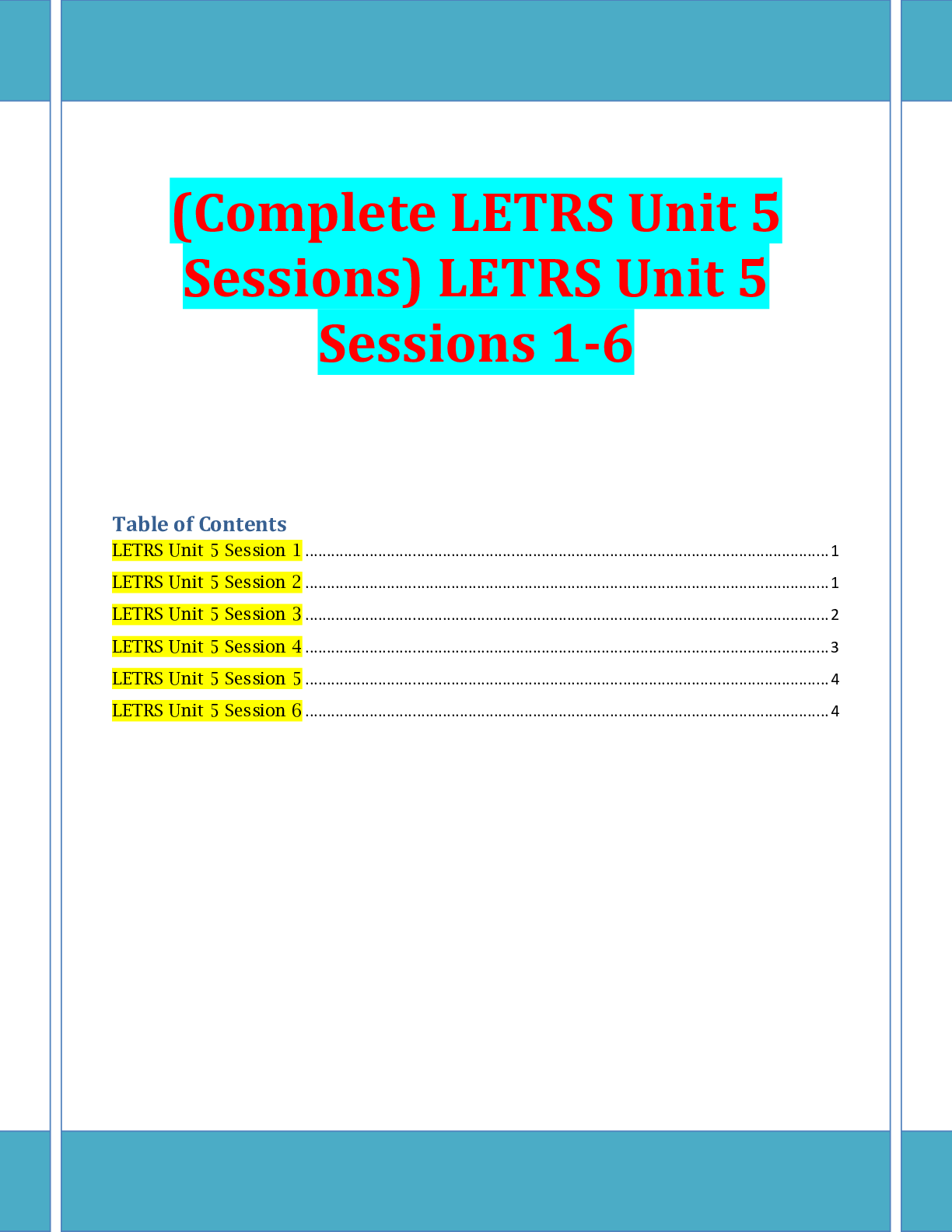
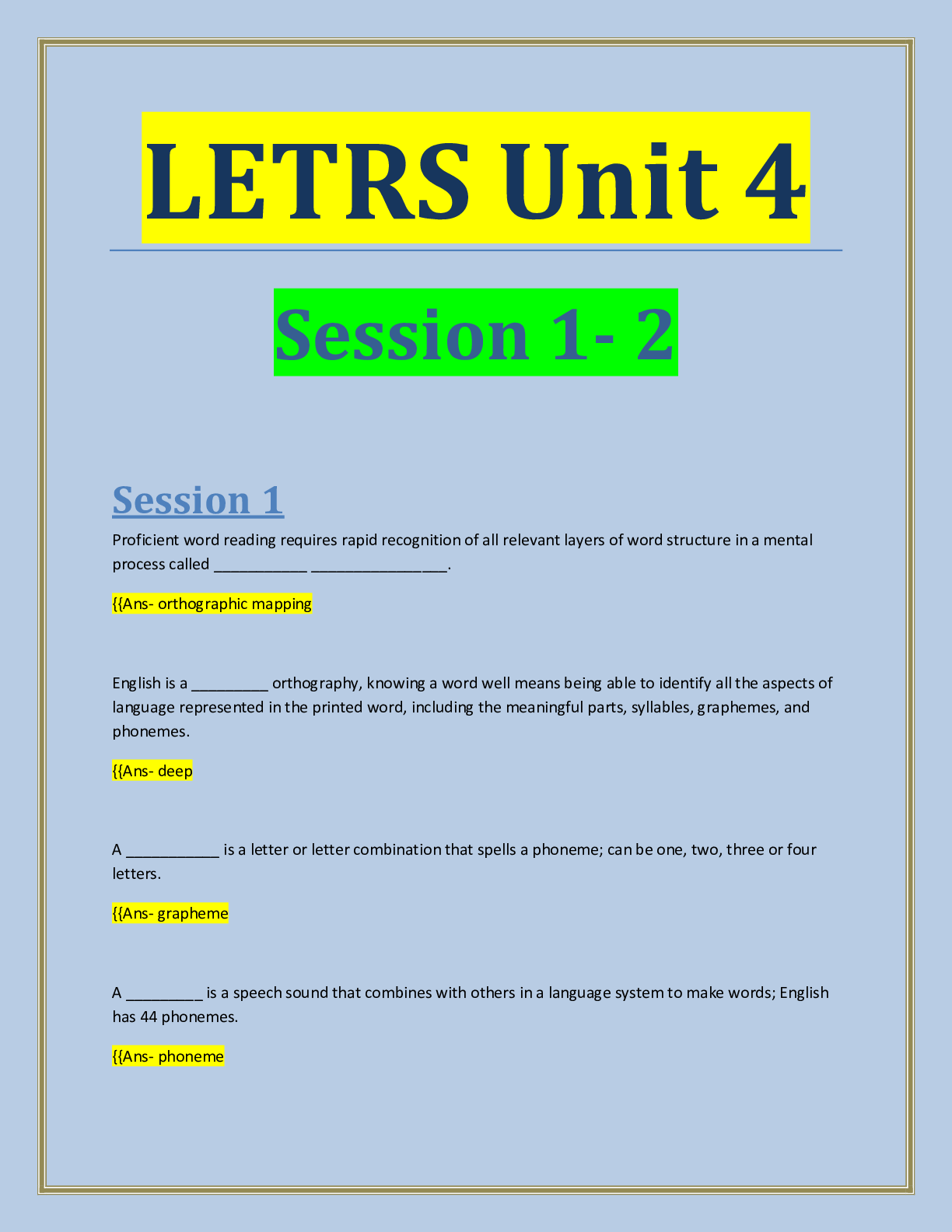
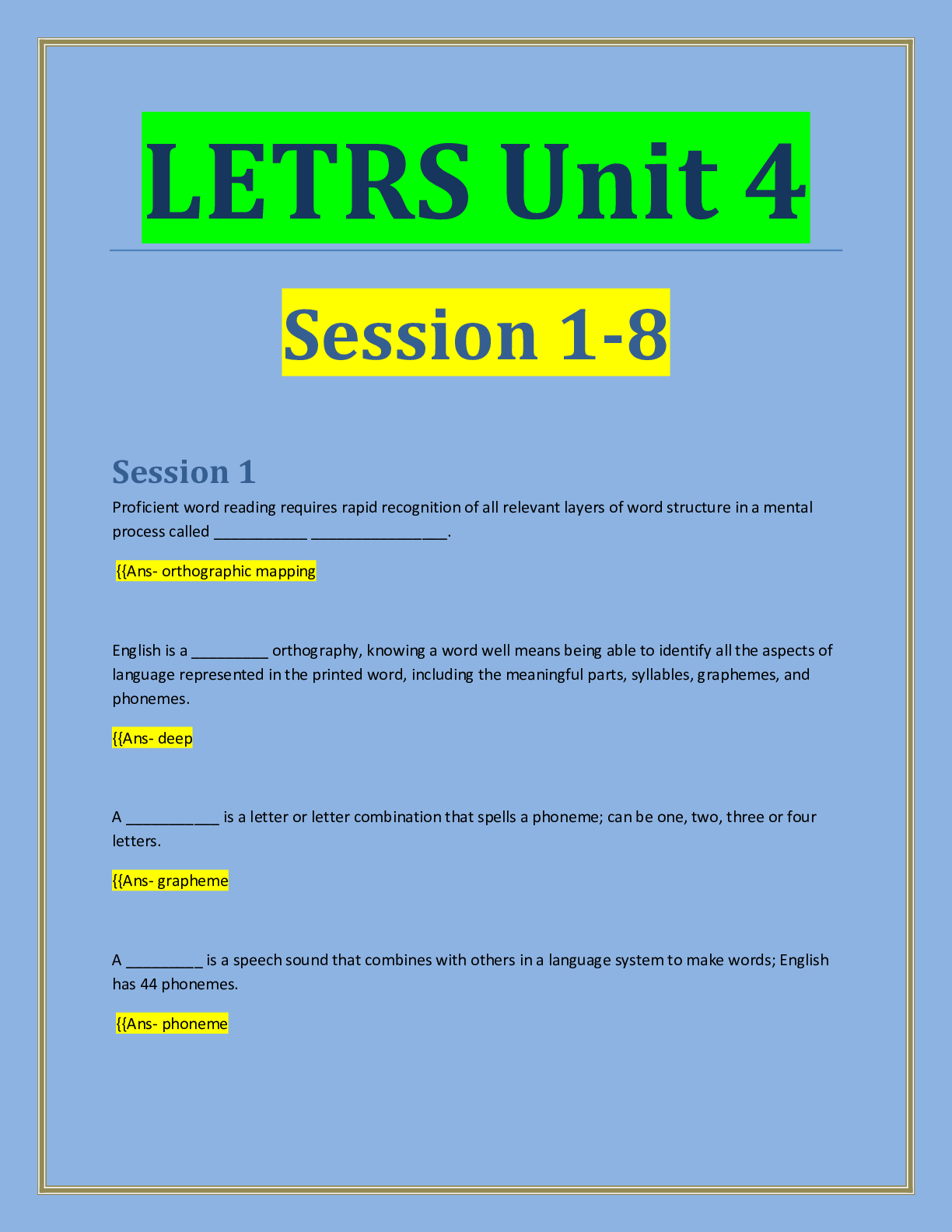

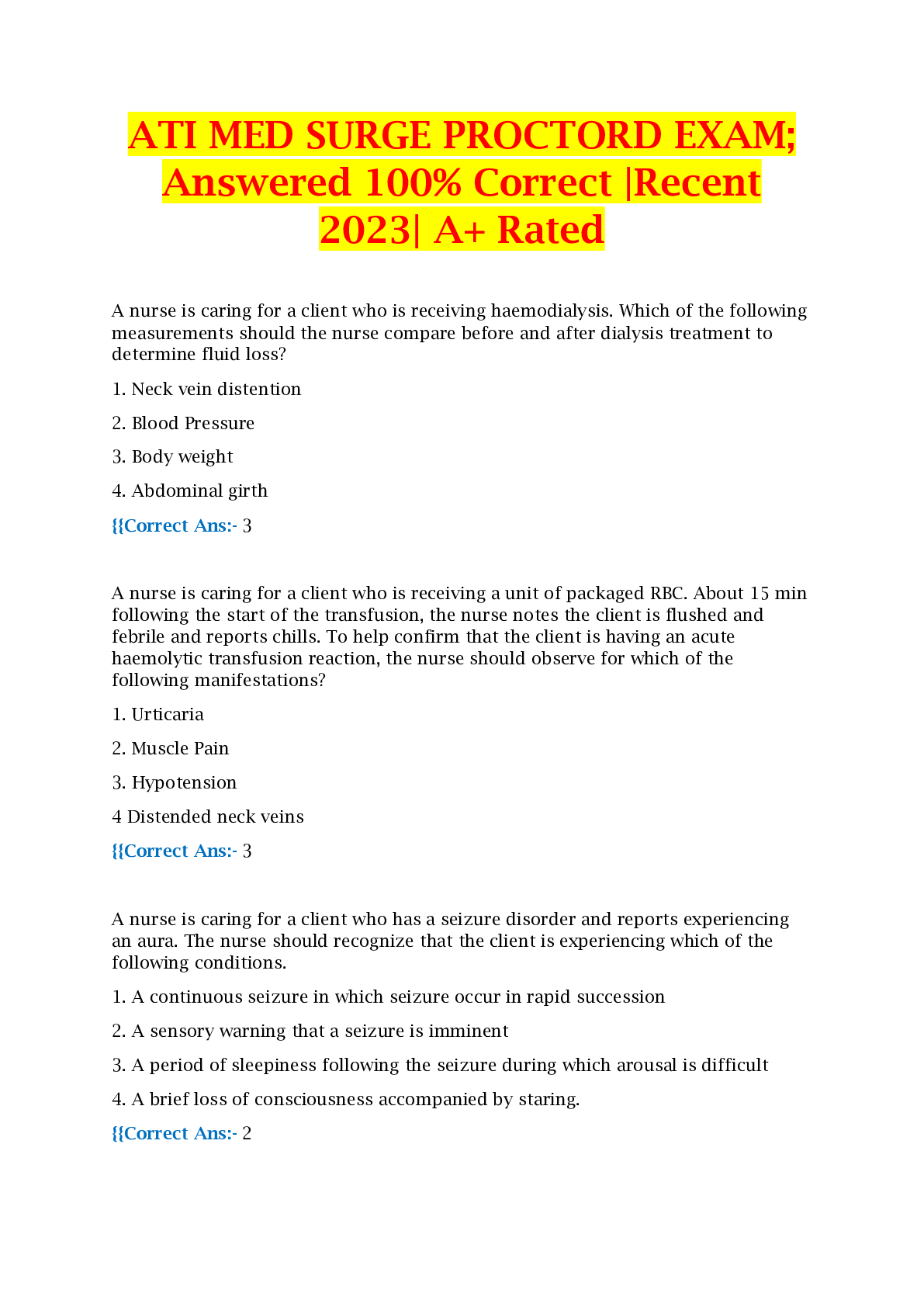


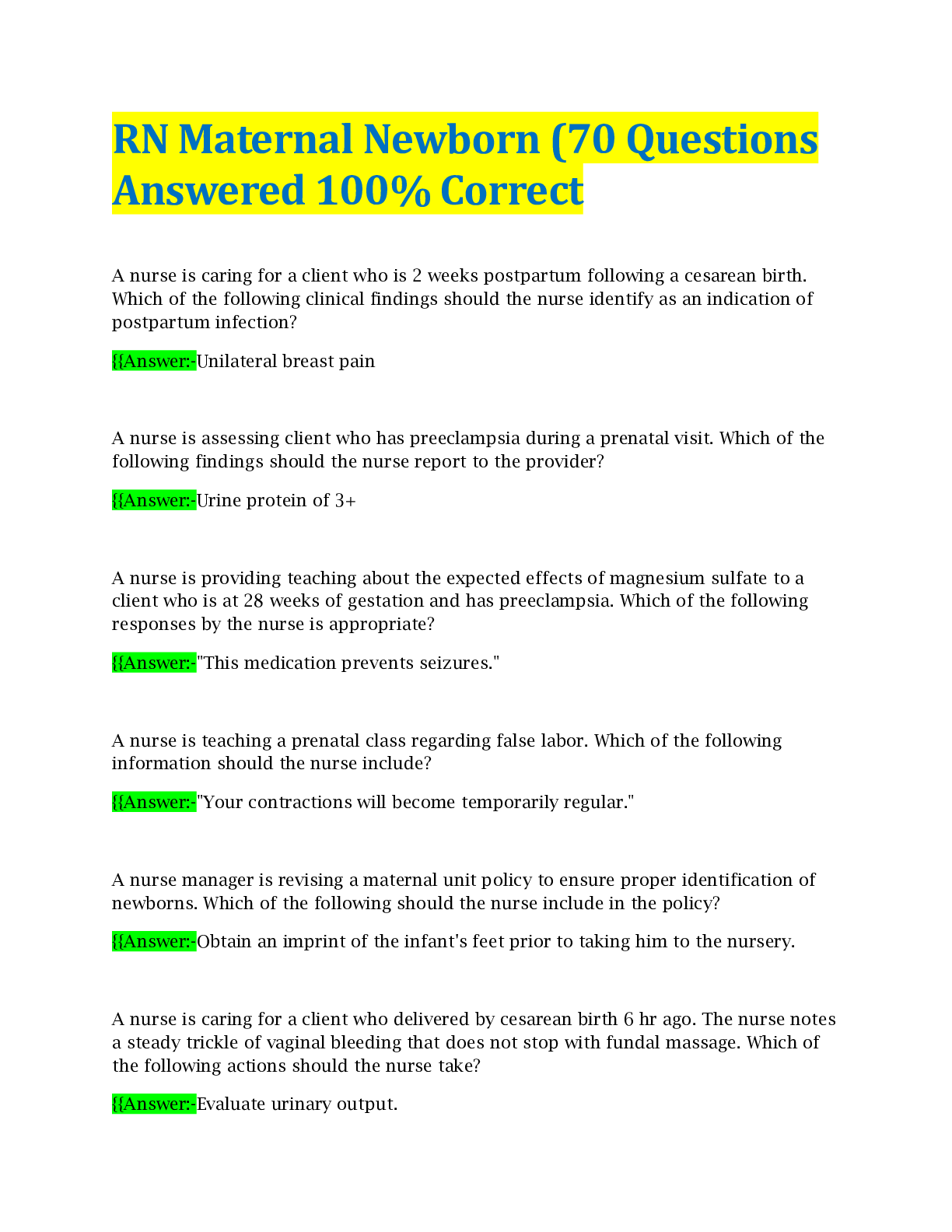
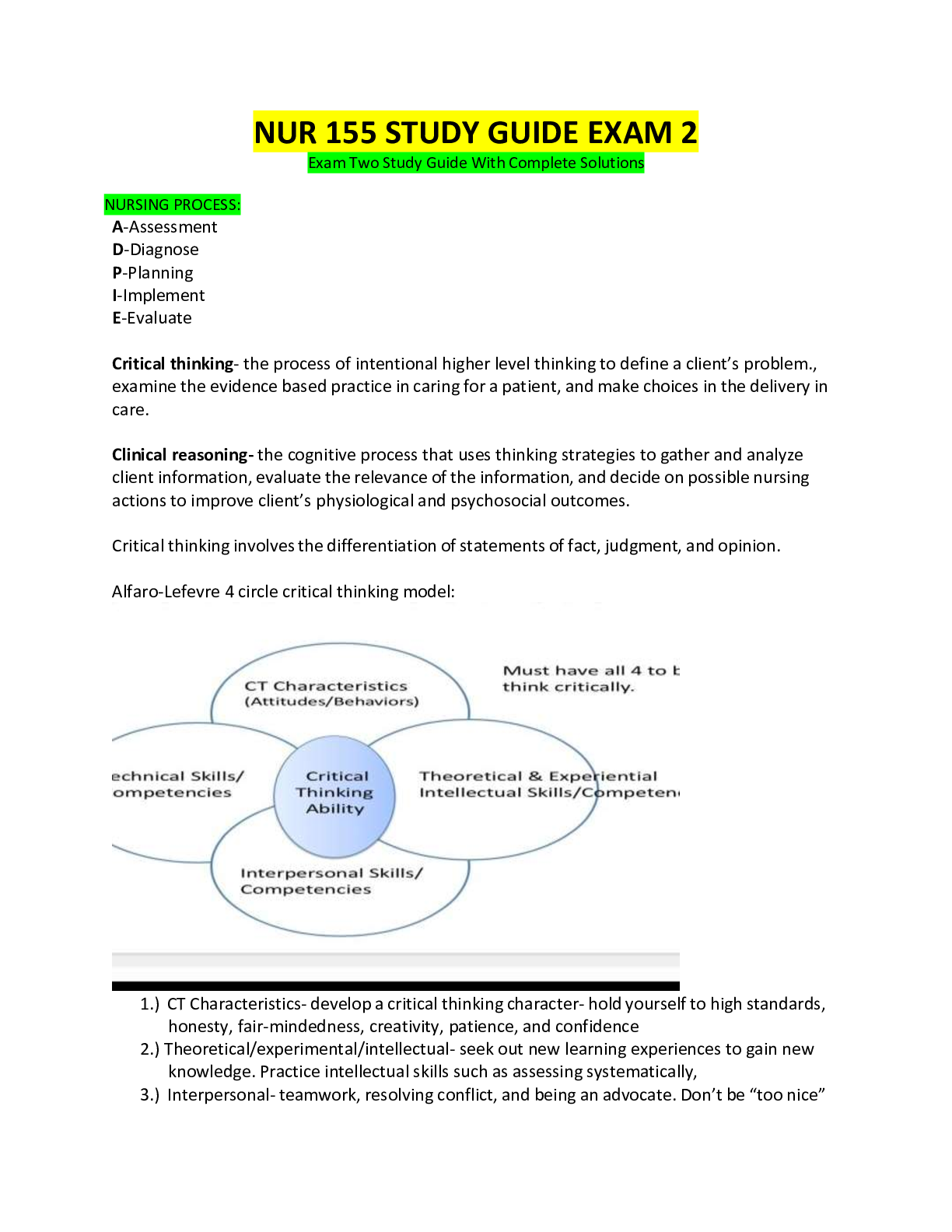
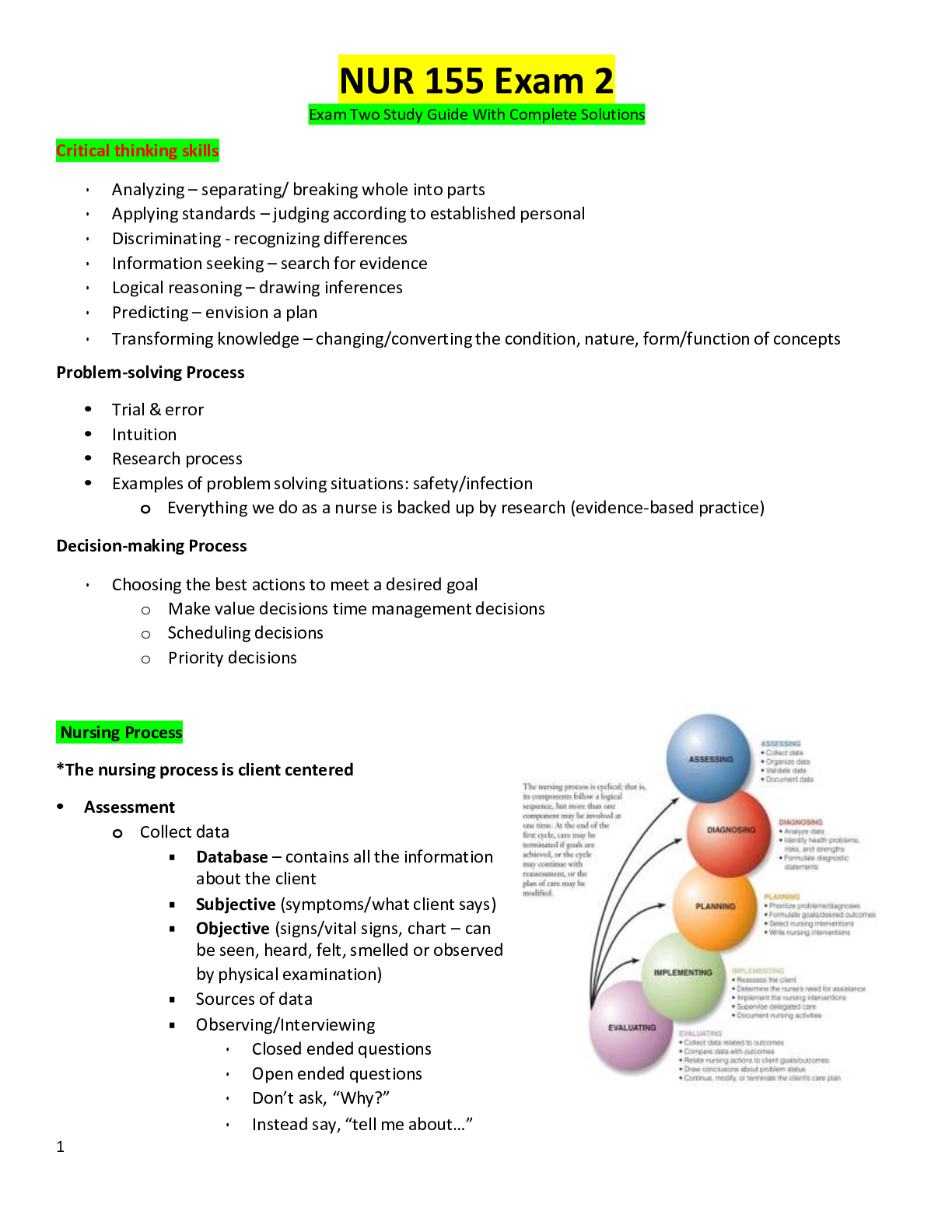
 RN HESI EXIT EXAM VERSIONS TEST BANK.png)
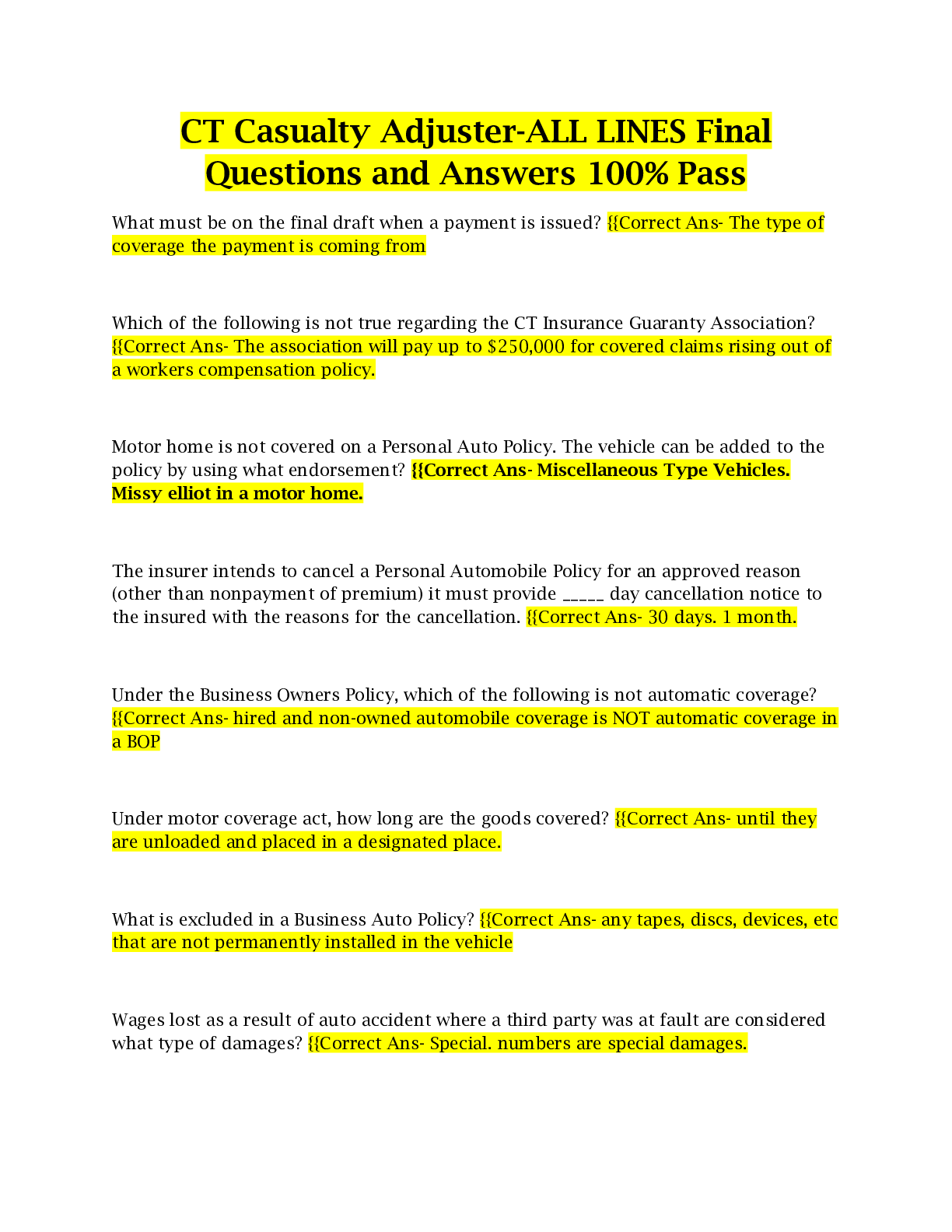





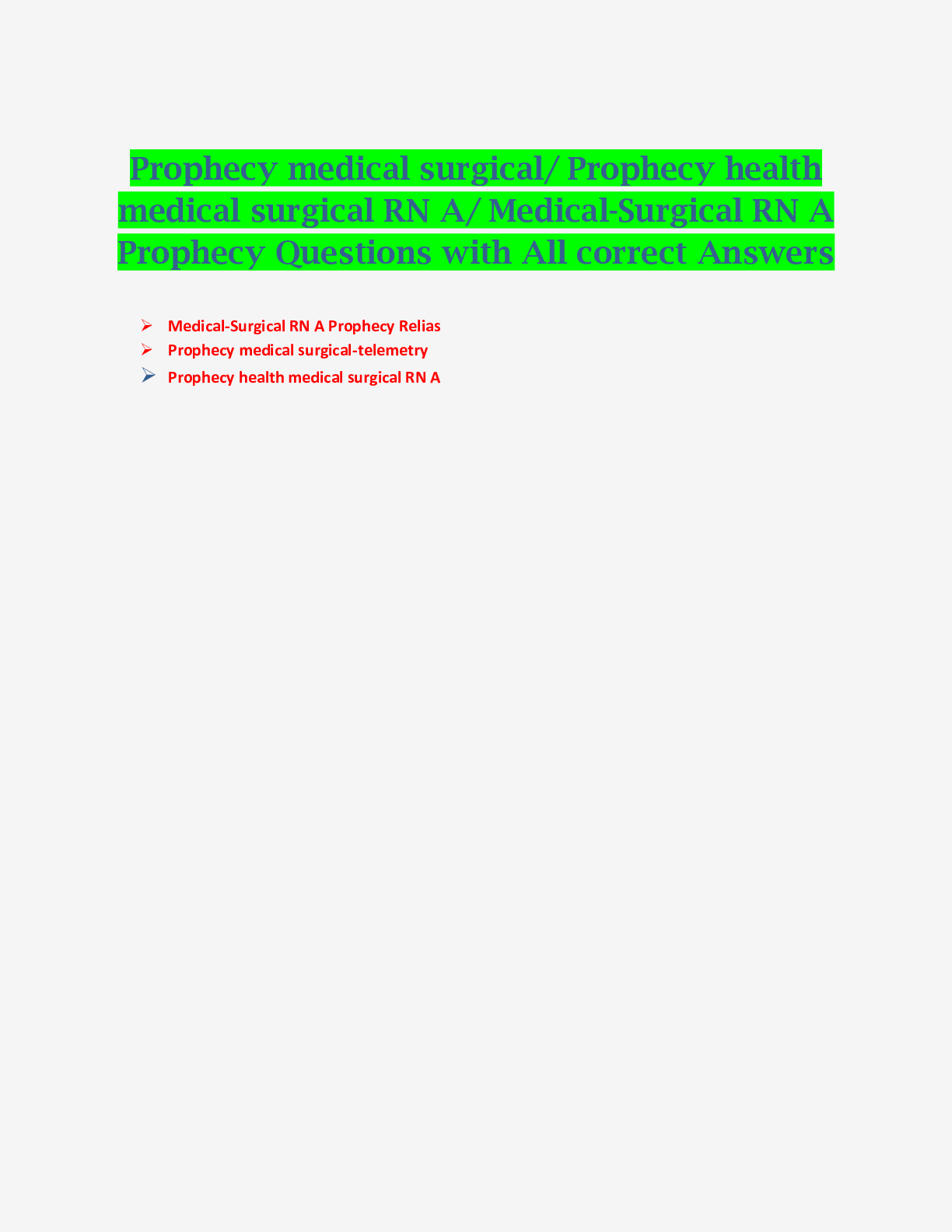




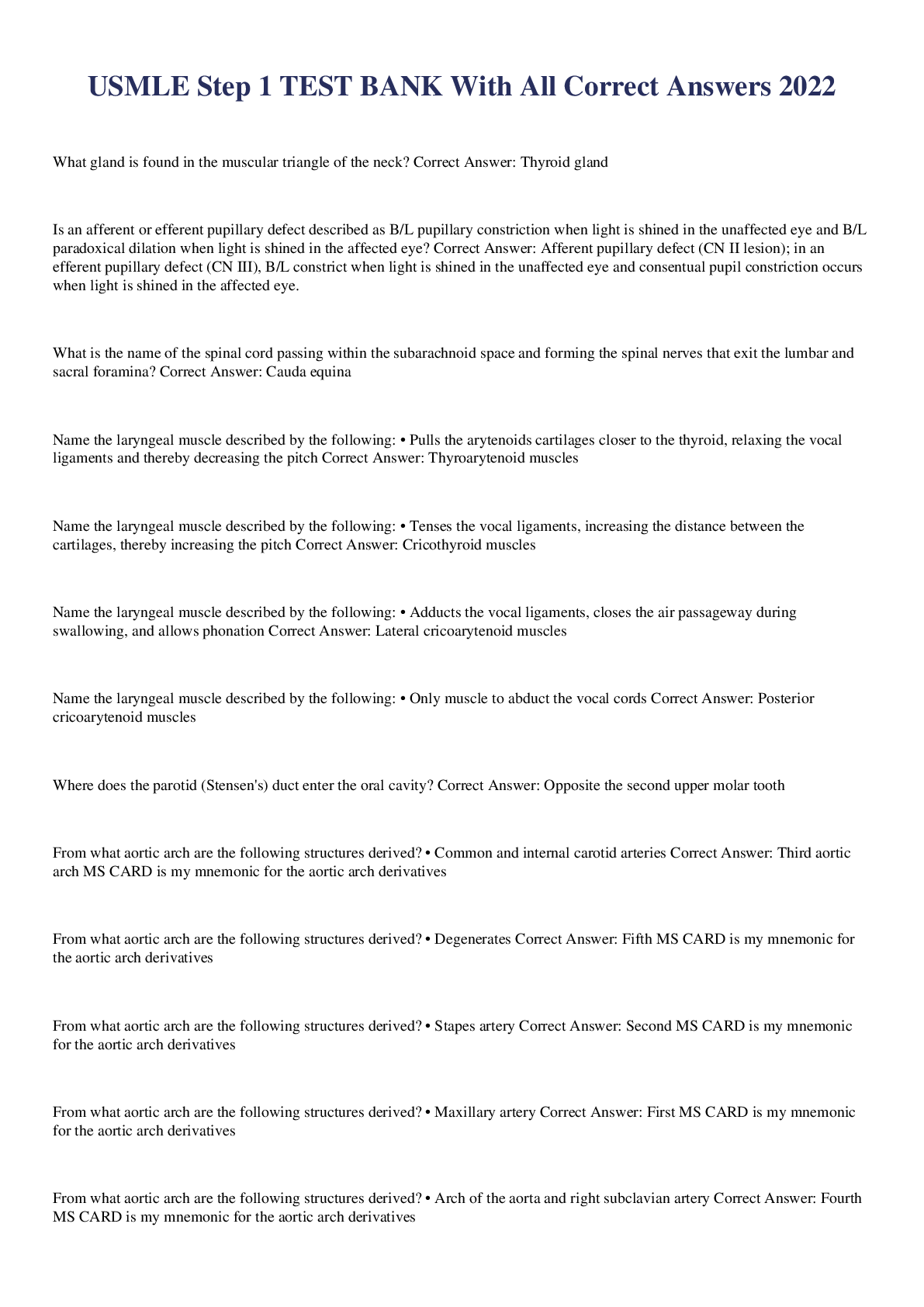

 with all correct answers.png)



 2022 With ALL Correct Questions and Answers.png)
